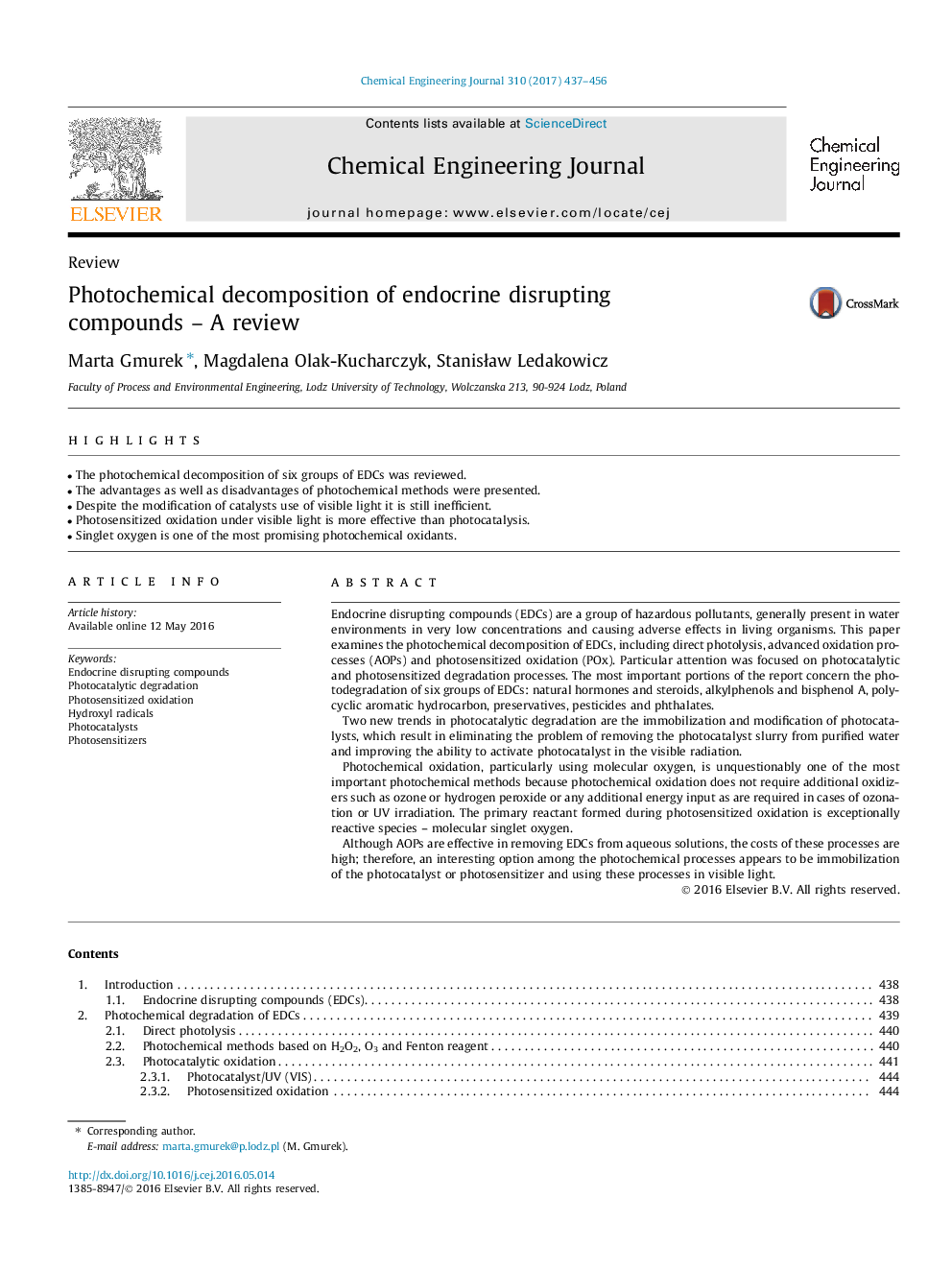| Article ID | Journal | Published Year | Pages | File Type |
|---|---|---|---|---|
| 6466750 | Chemical Engineering Journal | 2017 | 20 Pages |
â¢The photochemical decomposition of six groups of EDCs was reviewed.â¢The advantages as well as disadvantages of photochemical methods were presented.â¢Despite the modification of catalysts use of visible light it is still inefficient.â¢Photosensitized oxidation under visible light is more effective than photocatalysis.â¢Singlet oxygen is one of the most promising photochemical oxidants.
Endocrine disrupting compounds (EDCs) are a group of hazardous pollutants, generally present in water environments in very low concentrations and causing adverse effects in living organisms. This paper examines the photochemical decomposition of EDCs, including direct photolysis, advanced oxidation processes (AOPs) and photosensitized oxidation (POx). Particular attention was focused on photocatalytic and photosensitized degradation processes. The most important portions of the report concern the photodegradation of six groups of EDCs: natural hormones and steroids, alkylphenols and bisphenol A, polycyclic aromatic hydrocarbon, preservatives, pesticides and phthalates.Two new trends in photocatalytic degradation are the immobilization and modification of photocatalysts, which result in eliminating the problem of removing the photocatalyst slurry from purified water and improving the ability to activate photocatalyst in the visible radiation.Photochemical oxidation, particularly using molecular oxygen, is unquestionably one of the most important photochemical methods because photochemical oxidation does not require additional oxidizers such as ozone or hydrogen peroxide or any additional energy input as are required in cases of ozonation or UV irradiation. The primary reactant formed during photosensitized oxidation is exceptionally reactive species - molecular singlet oxygen.Although AOPs are effective in removing EDCs from aqueous solutions, the costs of these processes are high; therefore, an interesting option among the photochemical processes appears to be immobilization of the photocatalyst or photosensitizer and using these processes in visible light.
